
How to Build A High Quality AI Content Strategy in 6 Steps

Content Strategist
Is your AI acting as a high-speed writing assistant, or is it the architect of your entire content plan?
This question gets to the heart of why so much AI-generated content falls flat. Teams across the world are using artificial intelligence to produce articles, blog posts, and social updates at a blistering pace. Yet, very few use it for the single most important task: building the foundational content marketing strategy that dictates what gets created in the first place.
The result of this flawed content creation approach is a digital landfill of perfectly readable, grammatically correct content that achieves nothing. It doesn't rank, it doesn't engage, and it certainly doesn't drive business. The data confirms this bleak reality. A widely cited Ahrefs study found that over 90% of content gets zero traffic from Google. It’s published into a void.
This article provides a step-by-step process to build a genuine AI driven content strategy.
Table of Contents
First, Stop Using AI as a Content Mill
There is a critical difference between using AI for content tactics and using it for strategic planning.
The common tactical approach, often powered by Generative AI, is seductive in its simplicity: feed one of the many AI tools a keyword, receive a 1,500-word article a minute later, and hit publish. This cycle produces a high volume of generic, unfocused content and marks a flawed approach to content creation. These articles lack a unique point of view, fail to address the specific needs of a target audience, and rarely connect to a business objective. They are filler, designed to occupy digital space rather than capture market share.
A strategic approach is fundamentally different. It uses machine learning and natural language processing to perform the analytical work that must happen before a single word is written. This means using AI to analyze market data, identify competitor weaknesses, understand the nuanced intent behind a search query, and build a cohesive roadmap.
This aligns with how experts view the technology's best use case. AI tools are proven to be highly valuable in specific, targeted areas of content strategy. They excel at generating initial ideas, creating content frameworks, and processing vast amounts of data to identify patterns in user engagement and content performance (source: Arrow AI). The goal is to leverage AI for these analytical tasks to build a stronger foundation.
The Old, Crushing Way of Building A Strategy
To appreciate the shift, it’s useful to remember the traditional process of content planning and strategy creation. This isn't to dismiss the meticulous, high-cost strategies developed by large enterprises or specialized agencies. Those are built to navigate immense complexity and are often worth every penny.
However, for most small businesses, solo founders, and lean marketing teams, the manual process has long been a bottleneck defined by inefficiency. Without a dedicated strategist, access to modern AI marketing tools, or an enterprise-level budget, the work often falls to someone juggling multiple roles, leading to a familiar set of challenges.
-
Time-consuming research: Small business owners would spend days, sometimes weeks, buried in multiple SEO platforms like Ahrefs and Semrush, trying to piece together a coherent plan.
-
Data overload: The process involved wrestling with massive spreadsheets or siloed Google Docs, manually cross-referencing keyword lists with competitor rankings and content audit data until your eyes glazed over.
-
Educated guesswork: Even with all that data, connecting a specific topic to a measurable business outcome was prone to human bias and interpretation. It was difficult to prove that an article about "X" would actually lead to more "Y" for the business.
This manual process is slow, expensive, and often produces a strategy that is obsolete by the time it’s ready to execute.
Build Your AI-Powered Content Strategy in 6 Steps
The following six steps provide a clear method for using AI as a strategic partner. Following these steps will help you develop a content strategy AI can execute with precision, creating a clear path from business objectives to published content that performs.
Step 1: Define Your Business Goals and Map Them to Content
AI tools are powerful, but they're only as good as the instructions they receive. The first and most vital step is to give your strategy a clear purpose. You must define what success looks like in specific, measurable terms.
Avoid vague objectives like "increase brand awareness." Instead, anchor your strategy to tangible business results.
-
Increase qualified demo requests from organic search by 15% in the next quarter.
-
Reduce customer support tickets related to "billing issues" by 20% through targeted help articles.
-
Capture the top 3 search positions for the commercial-intent keyword phrase "enterprise project management software."
Once you have these goals, you can map content creation directly to them.
While you can guide a generic AI to understand your marketing funnel, you are still responsible for providing all the strategic input. The process is manual and fragmented, leaving you to connect goals, keywords, and funnel stages on your own.
A dedicated AI strategist, however, is built to automate this connection. For instance, a tool like Yahini uses your business context to automatically map keyword opportunities to specific funnel stages (TOFU, MOFU, BOFU), ensuring every piece of content has a clear job to do.
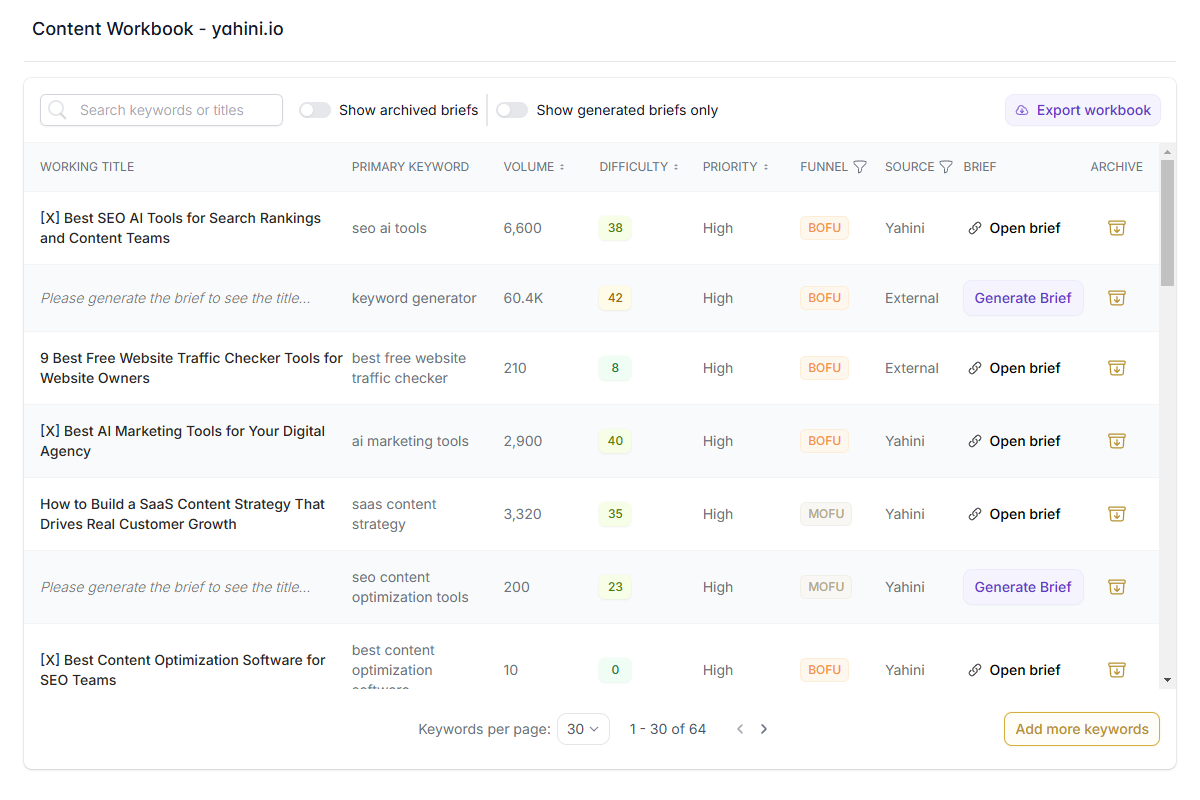
Step 2: Use AI to Analyze Your Website and Find Hidden Gaps
Before you build anything new, you need a clear picture of what you already have.
This does require basic comfort with navigating Google Search Console to export your data, but you can use AI tools like Claude or ChatGPT to accelerate the analysis itself. (For those concerned about data privacy, you can replace your specific URLs with placeholders like /blog-post-1 before pasting the data into an AI-powered tool).
Here's a simple, step-by-step process to get started:
-
Export your data: Go to Google Search Console. Navigate to Performance > Search Results. Click on the "Pages" tab. Set the date range to the last 6-12 months. Export this list of pages and their associated clicks and impressions.
-
Enrich with keyword data: Use an SEO tool (or Google Search Console) to export the top keywords your site currently ranks for.
-
Use AI to find opportunities: Combine this data and feed it to a large language model like Claude 3.5 or Gemini 2.5 with a specific prompt.
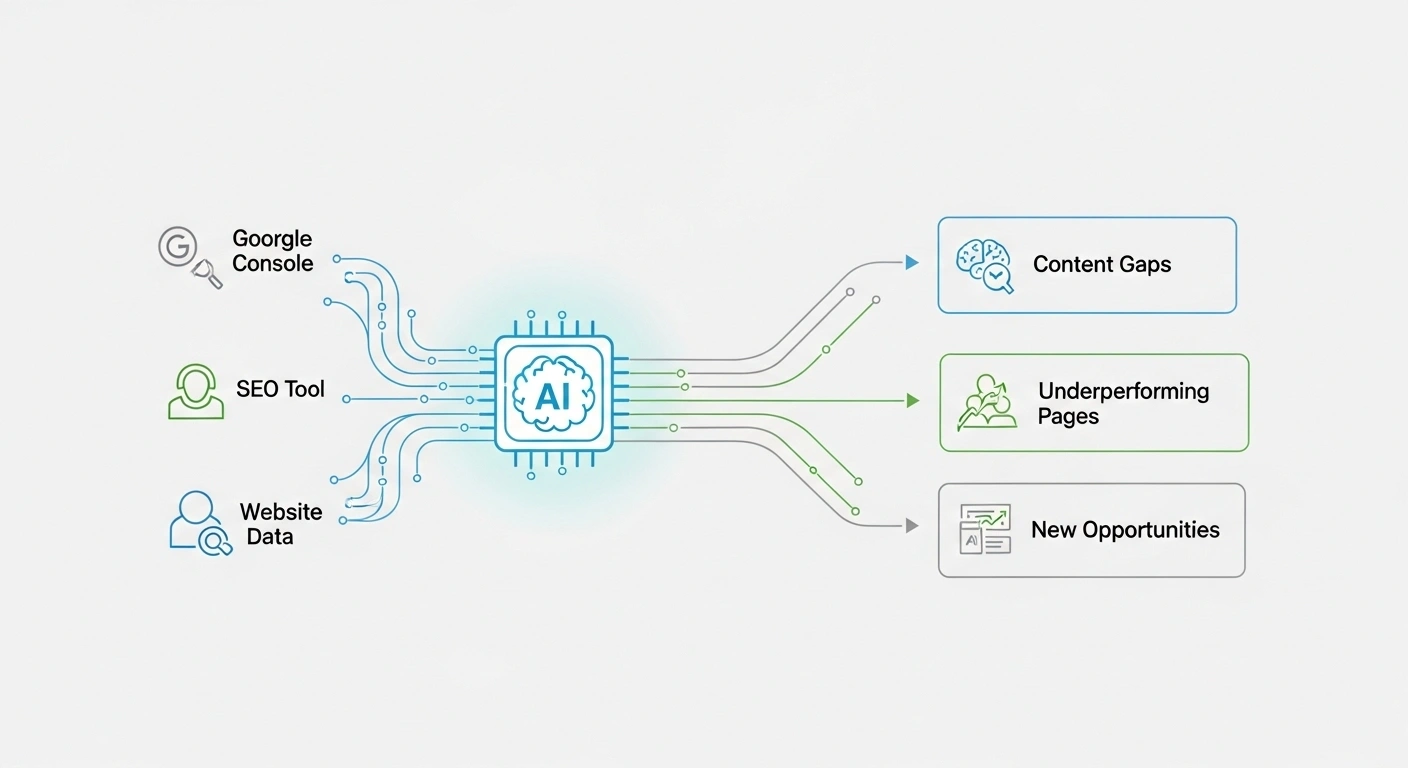
A first prompt you can use:
Act as an expert content strategist. I am providing you with two sets of data for my website, [YourWebsite.com].
Data Set 1: A list of my top-performing pages from Google Search Console, including URL, clicks, and impressions.[Paste Your GSC Data Here]
Data Set 2: A list of keywords my website ranks for.[Paste Your Keyword Data Here]
Based on this data, analyze my current content strengths and weaknesses. Identify:
-
Content Gaps: What logical topics related to my existing strengths are missing?
-
Underperforming Content: Which pages have high impressions but low clicks, suggesting a need to improve the title tag, meta description, or content quality?
-
Cannibalization Issues: Are there multiple pages competing for the same keywords?
Please present your analysis in a clear, actionable table.
A second prompt:
Act as a senior content strategist. I am providing you with a list of my blog post URLs, along with their search clicks, impressions, and average position from Google Search Console.
-
Identify the top 10% of my performing articles based on clicks. What are the common themes, topics, or formats among these successful posts?
-
Identify the bottom 20% of my articles (low clicks and impressions). Are there any patterns among these underperforming posts?
-
Based on the successful topics, suggest 5 new article ideas that expand on these themes but target a different user question or sub-topic. These are my content gaps.
This analysis gives you an immediate, data-backed starting point for your new strategy, ensuring future content better serves your audience and improves the overall customer experience.
Step 3: Conduct AI-Driven Keyword and Competitor Research
AI (fortunately) enables a far more sophisticated approach to this super important content marketing task. It shifts the focus from raw search volume and difficulty scores toward discovering strategic opportunities your competitors have missed.
Specialized AI tools can uncover the questions your target audience is actively asking. Although not AI-based, platforms like AlsoAsked or AnswerThePublic are excellent for mining "People Also Ask" data to understand user curiosity and audience preferences.
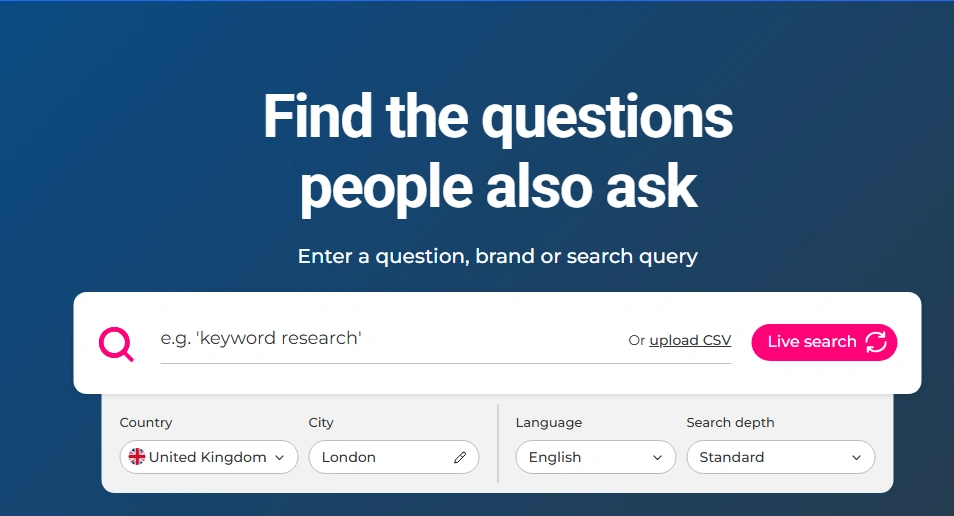
Larger platforms like Semrush now incorporate AI features to help brainstorm topic clusters around a primary keyword.
Check out some of the most hyped (and rightfully so) AI keyword generators.
Tools like Clearscope and SurferSEO analyze top-ranking pages to give you data on what topics to cover.
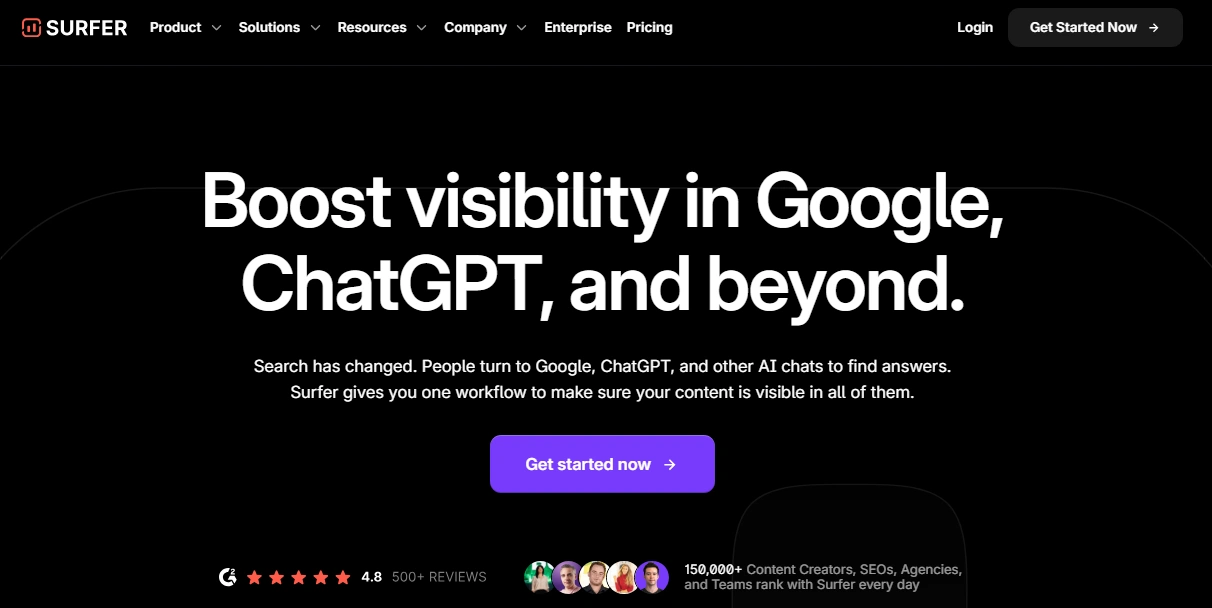
This is helpful, but the raw data still requires manual interpretation. A more advanced approach uses AI to perform the research and the strategic prioritization. Yahini’s automated keyword research does exactly this.It ingests your business goals and competitor set, identifies a curated list of high-impact keywords, and uses a proprietary scoring system to prioritize them based on business relevance. It then automatically maps these keywords to the TOFU, MOFU, or BOFU funnel stage, handing you a ready-to-execute plan.
Step 4: Generate Strategic Content Briefs with AI
A content brief is the bridge between your strategy and the final published article.
Manually creating a detailed brief is a significant drain on resources, often taking 2-3 hours of compiling SERP analysis, competitor outlines, user questions, and internal link targets.
This is one of the most powerful applications of AI in the content creation workflow.
An AI-powered brief generator can distill hours of research into a comprehensive document in seconds. By analyzing the top-ranking pages for a target keyword in-depth, an AI tool can identify the patterns, structures, and talking points that lead to success. The key is that it uses this analysis as input for creating a better outline, not just copying what already exists.
For instance, when you select a keyword in Yahini performs a fresh analysis of the search results page. In under 90 seconds, it delivers a detailed, editable strategist-level content brief that is already structured in the ideal content format for that specific keyword and includes:
-
A primary keyword and a smart cluster of semantically-related secondary keywords to build topical depth and rank for a wider range of queries.
-
A strategic outline with recommended H1s, H2s and H3s built from deep SERP analysis, designed to cover the topic comprehensively while identifying a unique angle to stand out from competitors.
-
Critical user intent questions to address, pulled from 'People Also Ask' and other search data, ensuring the content directly solves the target audience’s problem.
-
A unique strategic angle for your content, derived from an automated analysis of top-ranking competitors that happens in the background, helping your article stand out.
-
Actionable internal linking opportunities to build your site’s topical authority and guide readers logically through your content.
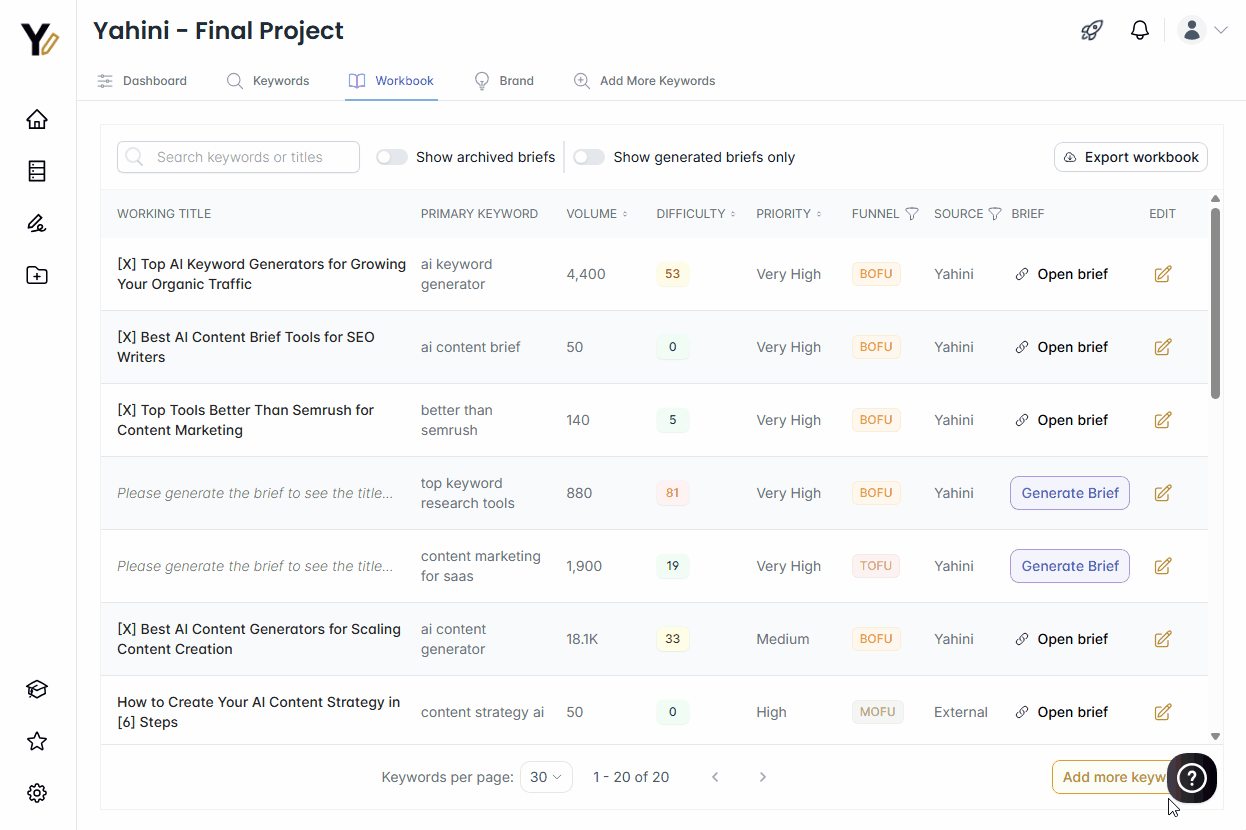
This turns a half-day research project into a two-minute task, freeing up strategists and editors to focus on refining the narrative and adding unique value.
Step 5: Establish an AI-Assisted Content Creation Workflow
The fear that AI tools will replace human writers is misplaced. The ideal relationship is a human-AI collaboration that elevates the content creation process. As marketing experts note, large language models "are only as good as the marketer using them." You still need a human who understands your audience and knows how to "prompt, tweak, and QA the outputs."
A clear, efficient workflow looks like this:
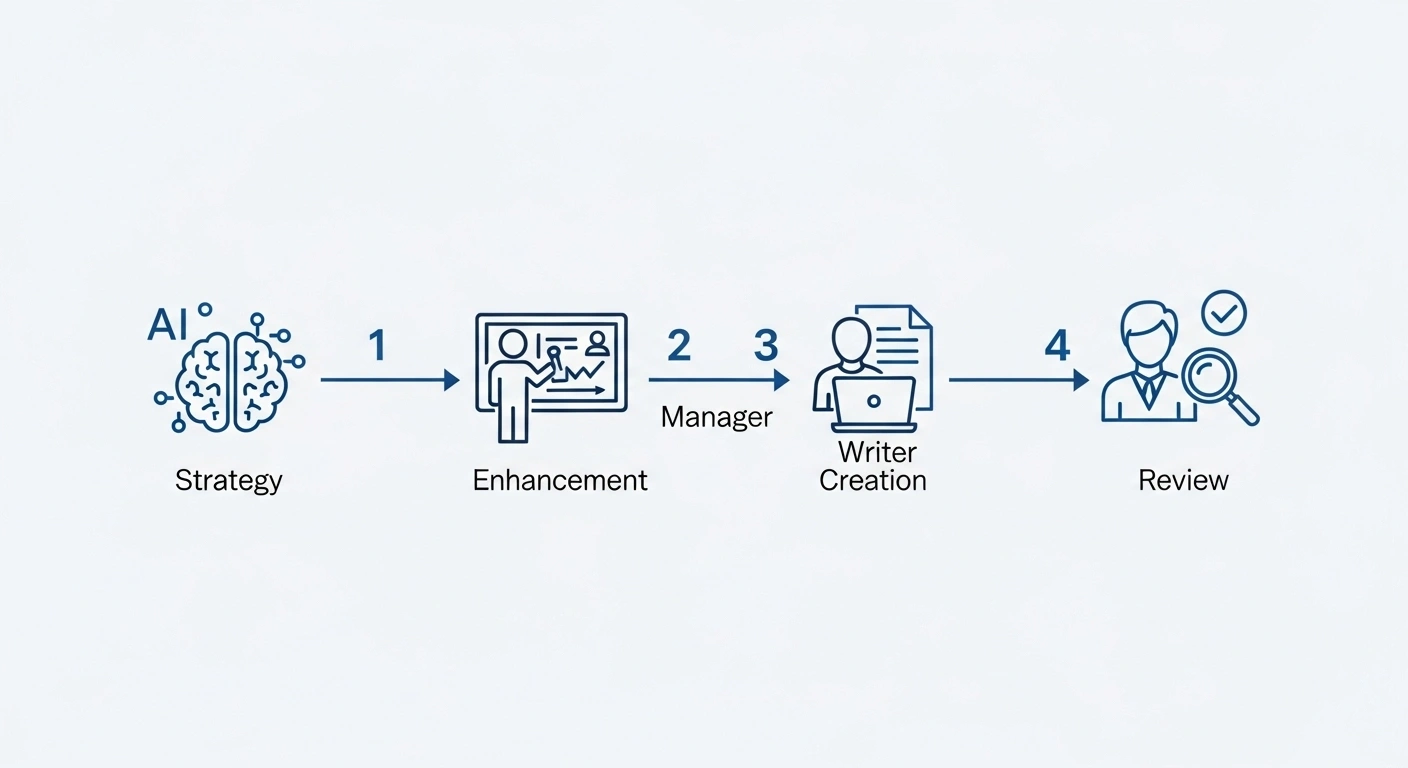
-
Strategy & briefing: Use an AI strategist like Yahini to generate the content roadmap and strategic briefs.
-
Assignment & enhancement: A content manager reviews the AI-generated brief, adds any specific brand notes on brand voice or expert insights, and assigns it to a writer.
-
Creation: The writer uses the brief as their guide. They are not starting from a blank page or a generic AI draft. They are starting from a strategically sound blueprint, which they can then use to craft an original, insightful article that reflects their expertise and the brand's voice. For an even more thorough strategy, this is also where a writer might use an AI image generator to create custom visuals for the post, or collaborate with a designer on graphics.
-
Review & polish: An editor refines the final piece for quality, accuracy, and narrative flow, ensuring it meets brand standards before publication.
In this model, AI provides the "what" and the "why." The human creator provides the "how."
Step 6: Measure Performance and Let AI Refine the Strategy
A content strategy is not a static document you create once a year. It is a living process that must adapt to real-world content performance data.
The manual loop involves constantly moving between Google Analytics, Google Search Console, and rank tracking tools to connect results back to the original plan. It can be difficult to see the forest for the trees.
AI is beginning to streamline this part of the process as well.
Tools like Databox use AI to surface important trends and anomalies in your analytics data, helping you spot what's working without getting lost in dashboards.
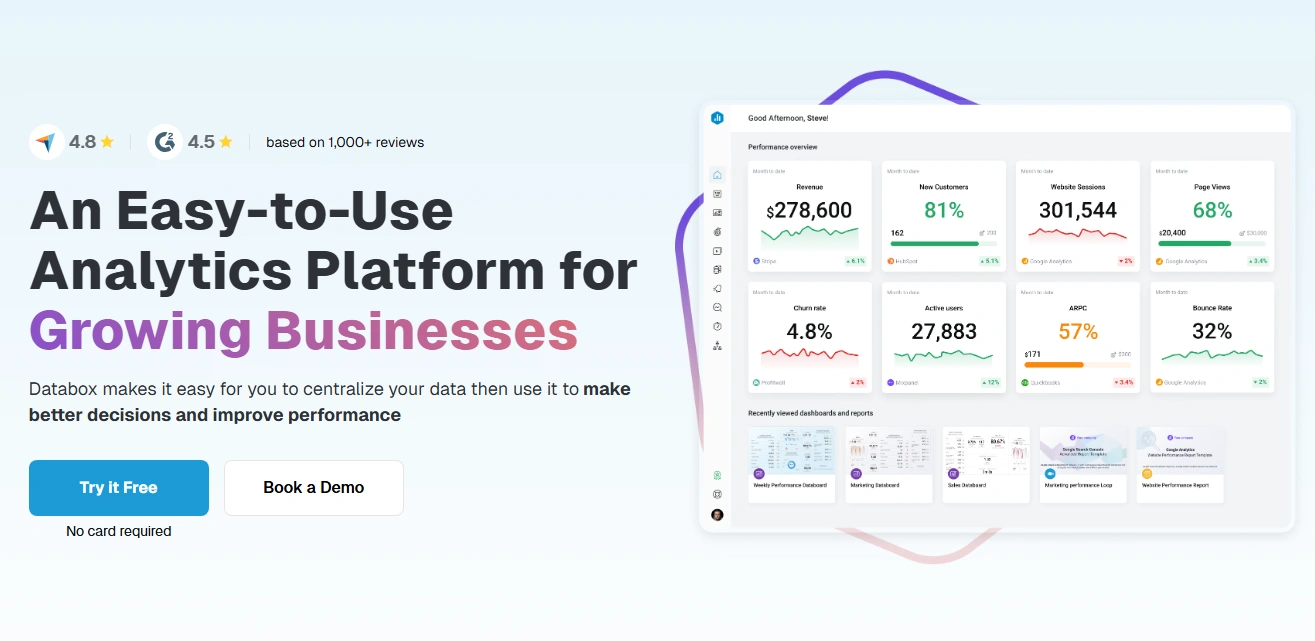
The future of AI marketing tools and strategy platforms includes direct integrations with these data sources, creating a closed loop between content creation and performance analysis.
Ready to Move from AI Content Generation to AI Content Strategy?
The path to content that drives real business outcomes is not paved with more words generated by AI tools, but with smarter strategy. The shift is simple but profound: stop using AI as a low-cost writer and start using it as your expert-trained content marketing partner.
When you let AI handle the deep analysis of your goals, your market, and your audience preferences, you get a clear, focused plan that empowers your team's content creation efforts. The result is content that stands out, improves the customer experience, builds trust, and moves your business forward. This is the future of content creation, driven not by volume, but by intelligence.
Stop guessing with your content. Let Yahini build an expert-backed content roadmap for you in minutes.
-
Need a 24/7 content strategist? See how Yahini can help you craft perfect content briefs.
-
Any questions? I’m happy to help. Just reach out to us!
-
Not ready yet? Learn more about Yahini here.